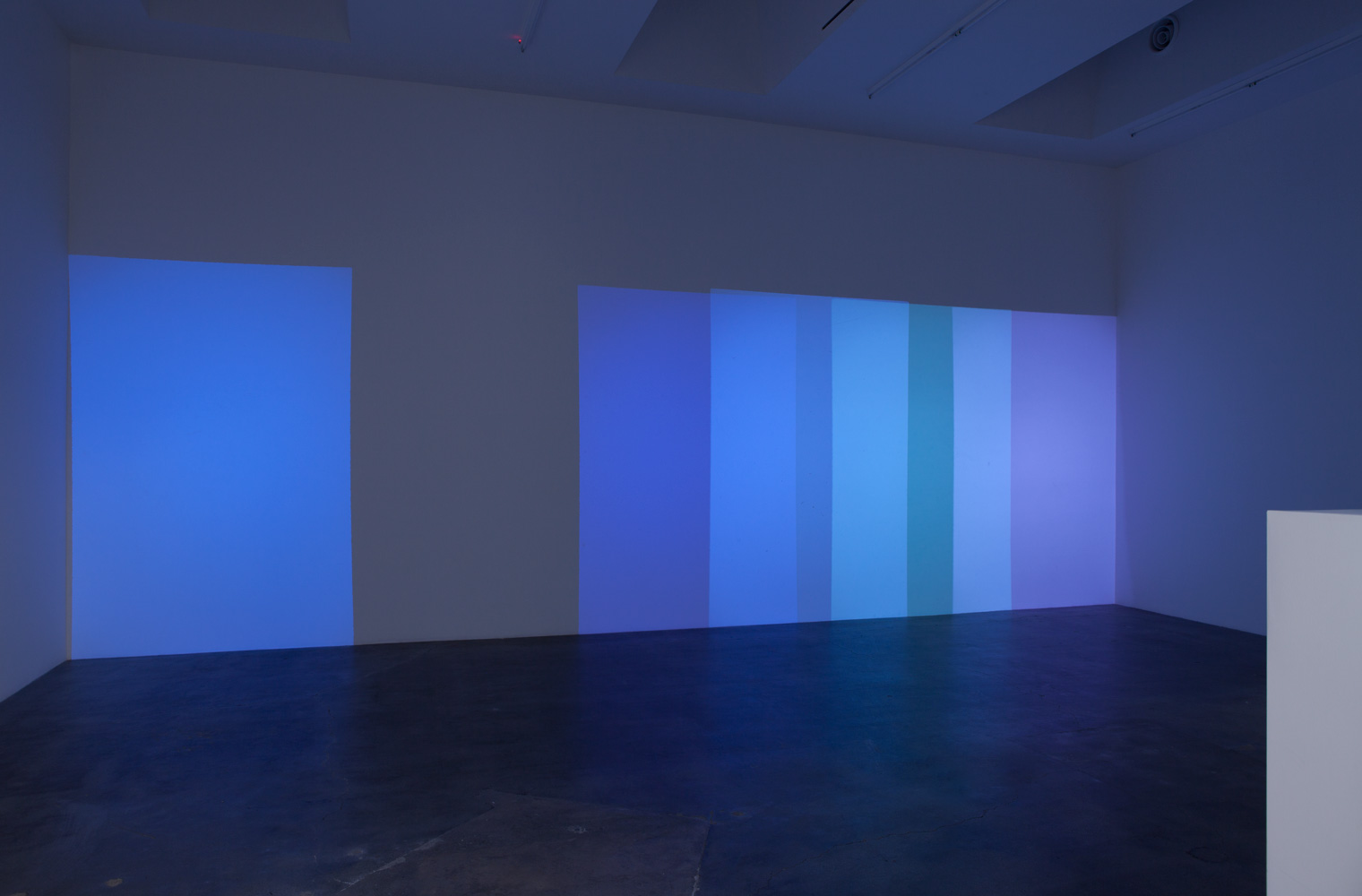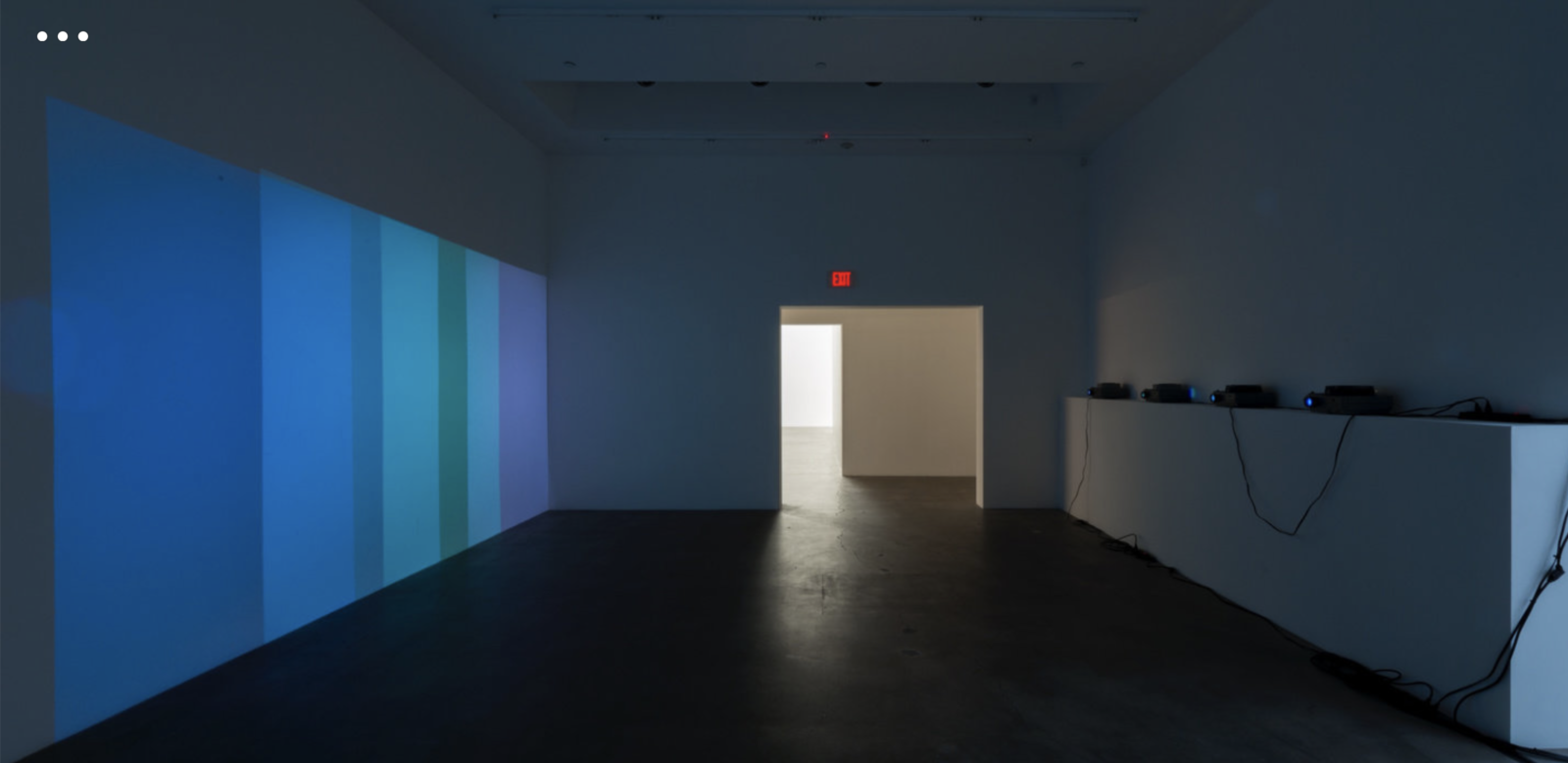The Cabinet of Dr. Caligari, Blum & Poe, Los Angeles, CA 2013
Just as Scott-Douglas’ cyanotype pictures require ultraviolet light to develop, his laser cuts rely on infrared light to generate their motifs. Infrared, on the opposite end of the light spectrum from ultraviolet, has the ability to burn away the surface of a canvas in a highly controlled manner, unlike sunlight. Scott Douglas’ laser cuts are “built” from the pictorial information found in his cyanotypes. After photographing a completed cyanotype, the artist will scan and decode the resulting image and export its content to a laser-cut machine. The laser cutter will then produce a “negative” of the blue picture, in essence creating a canvas devoid of all the cyan information found in the original source material. It is through this subtractive process that a relationship between these bodies of work takes shape. The life of the blue picture and the laser cut extends into a different potential space, all the while carrying the DNA of one and the other wherever it may travel.
This notion of transience is one that Scott-Douglas aims to address with his road cases. Conventionally used as a means of transporting equipment from one site to another, the road case here functions practically as a piece of “temporary architecture” and symbolically as the means to contain an inherently transient object. Constructed on a one-to-two descending scale from 14 x 28 feet at its largest to 2 x 4 feet at its smallest, the four road cases in the exhibition each contain an embedded laser cut filled within the metal frame of the case, which function equally as frames, walls, and cases. The laser cut exists only temporarily in its current incarnation as part of the gallery’s architectural plan – like a fake wall. Upon the end of the exhibition, the transient object becomes victim to any number of environments it might travel to, eventually finding a resting place, only later to be moved again. Scott-Douglas retrains our eye to the power of the set or stage to distort our understanding of space and time.
Alone in the smallest of the three main galleries, Scott-Douglas will present a new slide project. Loaded with eighty slides, each of the five rotary slide carousels will throw a square of blue light on the opposing wall at unsynchronized intervals, creating a cacophony of mechanized shuttering. Similar to how the production of his laser cuts depend on the existence of their corresponding cyanotypes, the artist has matched the chromatic value of each slide to an existing blue found in a cyanotype picture. Beyond their formal relationship, the duration of each slide projector is timed exactly to fifteen minutes, the amount of time required for the sun to fully expose a canvas outdoors, after which time, no further cyan can be drawn from the chemistry. It is through these relationships of form, content, time and space in which Scott-Douglas’ practice takes shape and one is left to negotiate within the hall of mirrors he has built.
Hugh Scott-Douglas (b. 1988, Cambridge, England) holds a BFA in sculpture from the Ontario College of Art and Design (OCAD). His work will be featured in the forthcoming exhibition Pattern: Follow the Rulesat the Eli and Edythe Broad Art Museum at Michigan State Museum in March 2013.




























